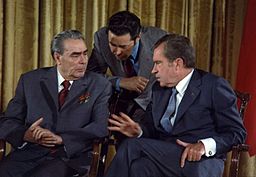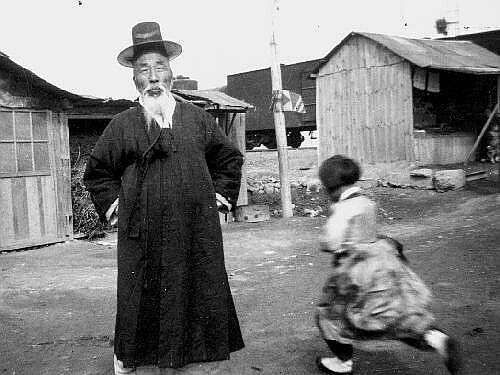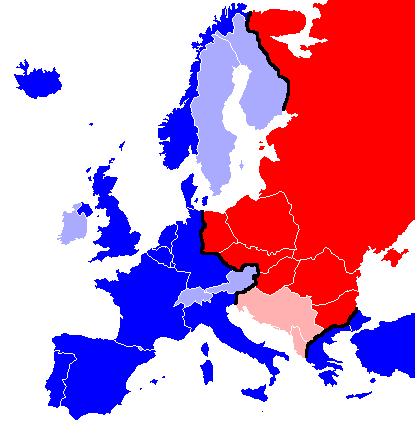When asked his opinion of Martin Van Buren, Joseph Smith, founder of the Mormon faith, said that his dog was better suited to be president. Smith felt his dog would at least make an effort to protect his abused and insulted master. Van Buren, however, could not bother to lift a finger to help the oppressed. Smith was not alone in his dislike for Van Buren. The eighth president of the United States is often described as the least loved national politician of his time. This was with good reason. Van Buren was the original Frank Underwood, or Francis Urquhart, in “House of Cards”. Van Buren relentlessly schemed and plotted his way to the Oval Office, casting aside all in his path while ingratiating himself to Andrew Jackson. Without Jackson’s endorsement, Van Buren’s chances of winning the White House were slim to none.
But Jackson owed his Presidency to Van Buren’s pure political pragmatism. Van Buren had clawed his way to the top of New York State politics as head of the “Albany Regency”, the first political machine in the United States. Then, while representing New York State as a Senator, he masterminded Jackson’s comeback victory in the 1828 presidential election by turning Jackson’s nickname of “Old Hickory” into the first presidential brand name.
The story behind Smith’s feelings about Van Buren lies in an often overlooked part of American history. In late 1839, these two men who had begun their distinctive American success stories from the vast expanse of Upstate New York met at the White House. Smith, the son of a farmer from Palmyra, sought from Van Buren, the son of a tavern keeper from Kinderhook, justice for the Mormons following the war the state of Missouri had waged on them.
Missouri versus the Mormons
One of the Mormon faith’s founding tenants was the idea that Jesus Christ had appeared to Native Americans and that America would be the place for the Second Coming. Jesus would return in Western Missouri, near the City of Independence. Smith, a formidable preacher, and to some, a prophet, sent a few missionaries to Missouri. The Mormon faithful soon followed, hoping to build their Zion.
Mormons were greeted with suspicion and derision by Missourians. They thought Mormonism could not be compatible with democracy since, to them, Mormons seemed obedient only to Smith. Armed bands of Missourians began roaming the countryside, terrorizing Mormons. In 1836, the Missouri Legislature created a new county, Caldwell, in the northwest corner of the state for the Mormons. The solution proved short-lived. Mormon immigrants and converts arrived daily, causing the population to spill over Caldwell’s borders into adjoining Daviess County.
The 1838 War began over the Mormon right to vote. William Peniston, a Whig politician and a colonel in the Daviess County militia, had sought Mormon support in his campaign for the state legislature. When the Mormons supported his Democratic opponent instead, Peniston gave a fiery speech denouncing them. Peniston’s supporters tried to stop Mormons from voting on Election Day, with one man stating that Mormons had no more right to vote than “Negroes”. A melee ensued, ending only when the Mormons withdrew.
The violence continued. Mormons were murdered and assaulted. Mormon houses were burned to the ground. Mormon livestock was set free. Finally, the Mormons resolved to fight back. On October 24, 1838, at Crooked River, a band of Mormon men encountered what they thought was an armed mob out for blood. Unfortunately, they were the local militia. In the resulting exchange of gunfire, three Mormons were killed.
When word of Crooked River reached Missouri Governor Lilburn Boggs, he declared the Mormons to be in “defiance of the laws of the state.” On October 27, 1838, Boggs issued an order directing that the Mormons must be “exterminated or driven from the state if necessary for the public peace.” Shortly after Boggs issued this order, a militia unit from Livingston County descended on a Mormon settlement at Haun’s Mill in Caldwell County. The militia killed, in cold blood, eighteen Mormon boys and men despite their efforts to surrender. One militiaman who dragged a wounded ten-year-old boy from his hiding place to shoot him justified it by saying that “nits make lice, and if he had lived, he would have become another Mormon.”
Surrender and Petitioning for Justice
After the Haun’s Mill massacre, the Mormons surrendered. Joseph Smith and other Mormon leaders were arrested for treason against the State of Missouri based on the Crooked River skirmish, even though Smith was not there. The Mormon leadership languished in jail for months, however, before being formally charged. Smith began to suspect that his imprisonment was an embarrassment to the state. After six months in prison, in the spring of 1839, Smith and the others were permitted to escape by a friendly sheriff who graciously agreed to get drunk and look the other way. The leaders fled, and joined the Mormons in Nauvoo, Illinois where they had taken refuge.
After his escape, Smith considered petitioning the federal government for compensation for the lives and land lost in the Missouri war. Smith, in truth, had great faith in the Constitution and in democratic government. He decided to go to Washington, D.C. himself so that he might make the case to Van Buren and to Congress. Smith arrived in the nation’s capital on November 28, 1839. The next day, Smith and two other Mormon leaders, accompanied by Congressman John Reynolds of Illinois, went to the White House. Smith carried with him petitions outlining the Mormon’s grievances.
Van Buren smiled as Reynolds introduced Smith as a Latter Day Saint, but his visage quickly turned to stern business as Smith presented the Mormons’ grievances. Reportedly, Van Buren looked at the party and exclaimed, “What can I do? I can do nothing for you! If I do anything, I shall come in contact with the whole state of Missouri.”
Reports of what happened next vary. Some say Van Buren agreed to reconsider. Smith and his party then left to present their case to Congress. They received help from Illinois’ congressional delegation, who were all too aware of the presence of this growing block of voters in their state. The Mormons presented to the United States Senate 678 petitions seeking compensation for losses in Missouri ranging from 63 cents to $505,000. The petitions were referred to the Senate Judiciary Committee, where they met stiff opposition from Missouri’s Congressional delegation. The Committee, not wishing to offend Missouri’s delegation, decided that the petitions were not for the federal government to consider, but were a matter for the Missouri courts.
During this time, Smith apparently met a second time with Van Buren, who was more diplomatic but still unmoved. Approximately a week or so following the first meeting, the Whigs, for the 1840 election, re-nominated the surprisingly popular William Henry Harrison, who had narrowly lost to Van Buren in 1836. With an election on his mind, Van Buren allegedly told Smith words that would reverberate throughout Mormon history: “Your cause is just, but I cannot help you. If I help you, I will lose the vote of the state of Missouri.”
Smith realized what he was up against. He knew the Mormons would never receive a fair trial in Missouri. He believed strongly that Missourians who understood this had helped him escape. But Van Buren’s callousness shook Smith at a deeper level. Smith wrote that Van Buren was merely “an office-seeker, that self-aggrandizement was his ruling passion, and that justice and righteousness were no part of his composition.”
What the future held
It is a reflection of the magnitude and scope of presidential power that a brief meeting with a president can have a major impact on Americans, whereas to the president, it may have been of minor significance. The mostly Mormon scholars who have attempted to research this episode have found that the meeting between Smith and Van Buren was not mentioned in Van Buren’s papers. But for the Mormons, the meeting was a pivotal event, which can be seen from Smith’s reaction to it.
After the meeting, Smith came to the same realization that every other group new to America does, that the best way for Mormons to gain the protection of the government was to seek public office themselves. Smith worked with the Illinois legislature to build protections for Mormons into Nauvoo’s City Charter, held office in Nauvoo himself, and, in 1844, Smith ran for president. With patience and in time, the Mormons have followed Smith’s lead and flourished.
As of writing this, Utah’s United States Senator Orrin Hatch, a Mormon, is President Pro-Tempore of the Senate. By law, Hatch is third in line for the presidency following the Vice-President and Speaker of the House of Representatives. In 2012, former Massachusetts Governor Mitt Romney headed the Republican Party’s ticket and was the first Mormon major-party nominee for president. Governor Romney surprised many by publicly considering a run for the presidency again in 2016. And while Mr. Romney ultimately decided to pass on standing for the presidency again, it could not have been an easy decision in light of Mormon history and Mr. Romney's knowledge that he has represented, in his lifetime, the best hope of a Mormon becoming president and perhaps gaining an increased acceptance for a faith that remains frequently misunderstood.
Van Buren, despite not offending Missouri, lost the 1840 election to William Henry Harrison. It cannot be said that his treatment of the Mormons played any role in his loss. The reality is that Van Buren’s loss likely had more to do with the Panic of 1837 and the economic depression that followed, and the growing factionalism in America that pit the North against the South and both of them against the West.
Missouri, for its part, did eventually acknowledge its wrongs. In 1976, the state finally formally rescinded Governor Boggs’ extermination order. In his order, Governor Christopher Bond expressed deep regret on behalf of all Missourians for the injustice and undue suffering caused to Mormons in 1838.
Did you enjoy this article? If so, do feel free to share it! Tweet about it, like it, or share it by clicking on one of the buttons below…
















